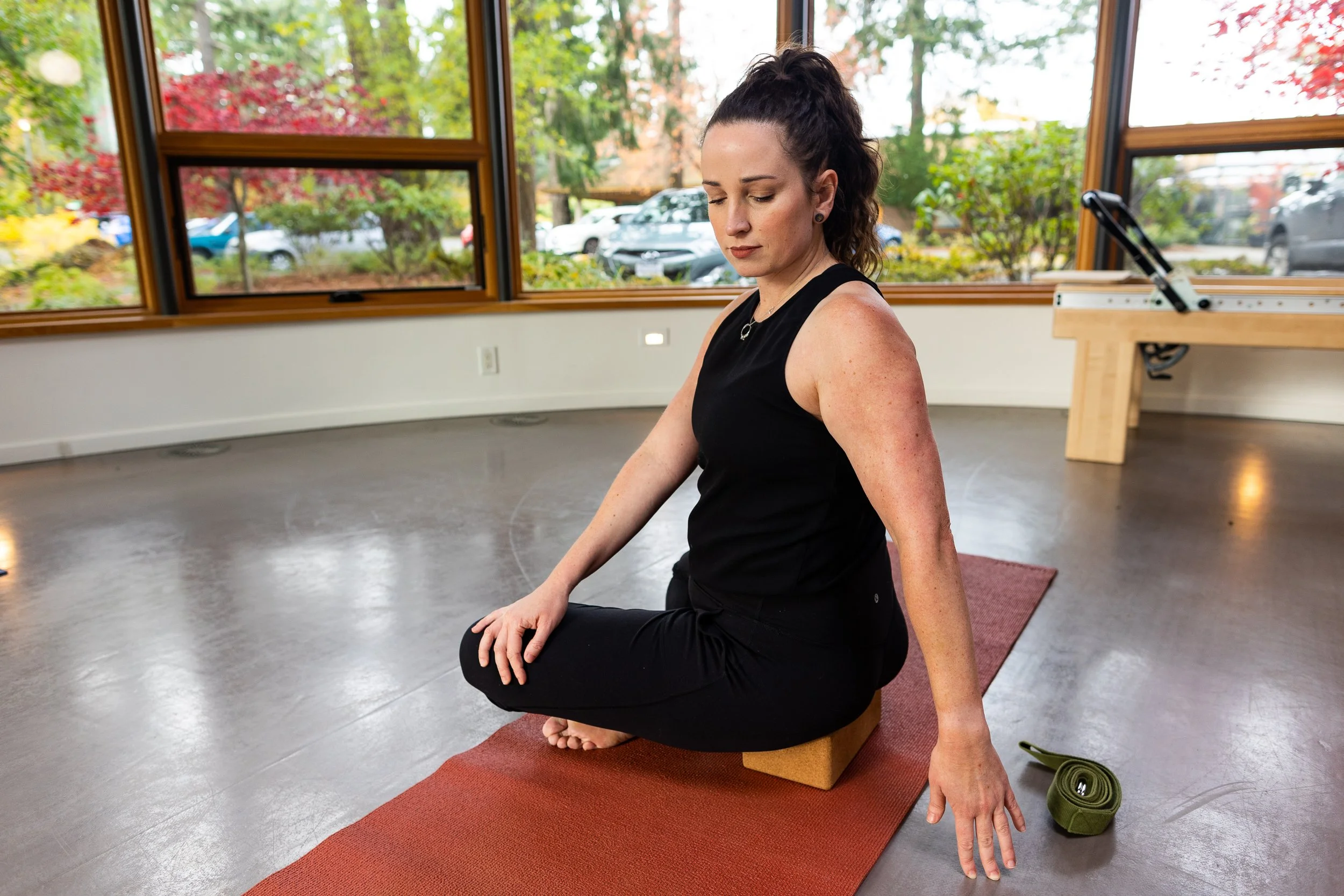Yoga Therapy: An Individualized Approach to Wellness
A pose for every problem
Most of us have probably taken a yoga class or two in our time, and are familiar with how it goes: a hyper-flexible, ultra-zen instructor positions him or herself at the front of the room, demonstrating a series of postures that we may or may not be able to twist, bend and squeeze our bodies into. Stock modifications are offered if we can’t make it all the way into a pose, and at every turn we’re urged to listen to our bodies, go to our edge, and stop there.
But what if you have a chronic injury, limiting physical or psychological condition, or another ailment that makes it almost impossible for you to take an ordinary yoga class?
That’s where yoga therapy comes in.
Let the pose come to you
In a typical yoga class, you work your body, slowly but surely, towards the fullest expression of a pose. Gradually, over time, your body opens and releases, and you’re able to hold the pose as it was designed to be held.
In therapeutic yoga sessions, however, the pose is adapted to your body’s specific needs. In either one-on-one sessions or small group classes, yoga therapists will consider your specific condition and limitations, and create a sequence of postures that are not only within your ability, but actually help to lessen symptoms or even heal your affliction.
Teaching yoga tailored to specific physical ailments and conditions has proved wildly successful: since the 1980s, when yoga therapy gained traction in the Western medical community for its impact on patients suffering from heart disease, it’s become a routinely recommended healing mode. Everything from back pain to anxiety disorders can be improved with regular yoga practice and therapy.
“Everything from back pain to anxiety disorders can be improved with regular yoga practice and therapy.”
Not Just a Pretty Practice: Training and Credentials for Yoga Therapists
What’s really unique about yoga therapy is how specialized it is: much like a Naturopathic Doctor or Physiotherapist will consider each patient holistically, so, too, will a certified yoga therapist take into account things like age, gender, ailments, medical history, even emotional stress and/or trauma.
Becoming a yoga therapist is a true commitment: a therapist must first take a 200-hour yoga teacher training program, then have a teaching practice for a minimum of one year, then complete an 800 hour therapeutic training program over the course of at least two years.
The dedication and training required ensure that classes and individual yoga therapy sessions are not only completely tailored to a patient’s needs, but also safe and free from any potential for further harm.
“We function best in life when we’re proactive rather than reactive: when we see things coming and do something about them before they arrive. ”
Yoga Therapy in a Group Setting
A little too new to yoga to be comfortable with a one-on-one session?
Yoga therapy can also be effective in a small group setting. Instructors will often focus on a particular ailment – at Tall Tree, for instance, we offer a class for folks who have chronic neck and/or shoulder pain – in groups small enough to allow for personalized attention on each member of the class.
The energy of a class setting can be really inspiring for people who are just starting yoga, so these group therapeutic sessions provide a way to have your specialized cake and eat it, too.
Remembering to Breathe
The physical postures are just the beginning when it comes to yoga and yoga therapy: breath work, meditation, and even some spiritual philosophy can make their way into classes or sessions, depending on a patient's interest or desire.
Ultimately, regardless of the postures, yoga acts as a reminder to slow down and breathe. In today’s busy world, it’s a welcome reminder for everyone, whether you choose to explore the therapeutic side of the practice or not.
Namaste.


















